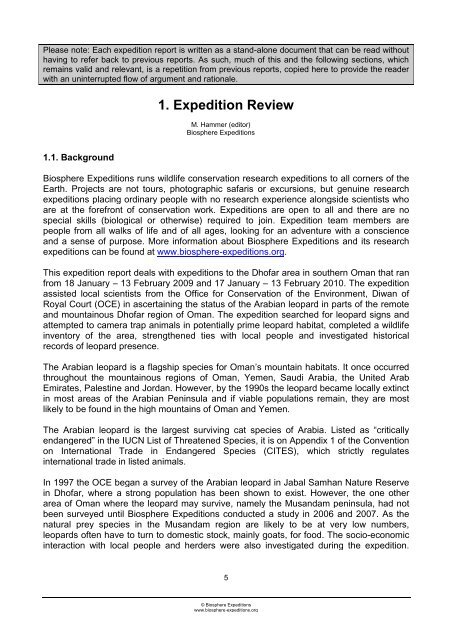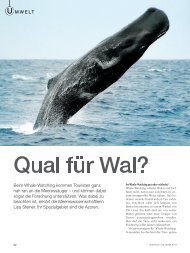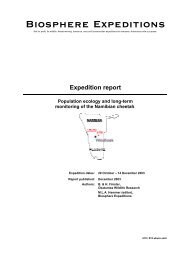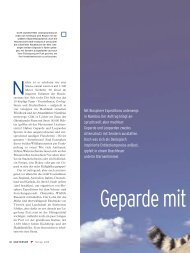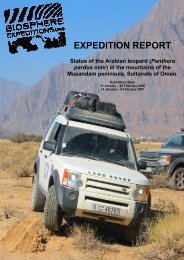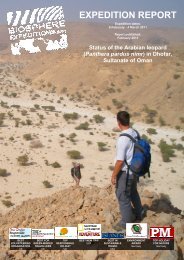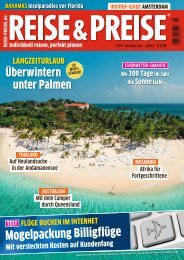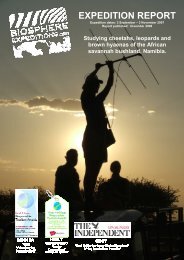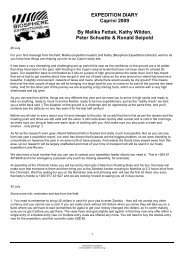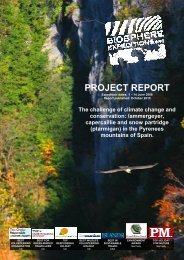EXPEDITION REPORT - Biosphere Expeditions
EXPEDITION REPORT - Biosphere Expeditions
EXPEDITION REPORT - Biosphere Expeditions
You also want an ePaper? Increase the reach of your titles
YUMPU automatically turns print PDFs into web optimized ePapers that Google loves.
Please note: Each expedition report is written as a stand-alone document that can be read without<br />
having to refer back to previous reports. As such, much of this and the following sections, which<br />
remains valid and relevant, is a repetition from previous reports, copied here to provide the reader<br />
with an uninterrupted flow of argument and rationale.<br />
1.1. Background<br />
1. Expedition Review<br />
M. Hammer (editor)<br />
<strong>Biosphere</strong> <strong>Expeditions</strong><br />
<strong>Biosphere</strong> <strong>Expeditions</strong> runs wildlife conservation research expeditions to all corners of the<br />
Earth. Projects are not tours, photographic safaris or excursions, but genuine research<br />
expeditions placing ordinary people with no research experience alongside scientists who<br />
are at the forefront of conservation work. <strong>Expeditions</strong> are open to all and there are no<br />
special skills (biological or otherwise) required to join. Expedition team members are<br />
people from all walks of life and of all ages, looking for an adventure with a conscience<br />
and a sense of purpose. More information about <strong>Biosphere</strong> <strong>Expeditions</strong> and its research<br />
expeditions can be found at www.biosphere-expeditions.org.<br />
This expedition report deals with expeditions to the Dhofar area in southern Oman that ran<br />
from 18 January – 13 February 2009 and 17 January – 13 February 2010. The expedition<br />
assisted local scientists from the Office for Conservation of the Environment, Diwan of<br />
Royal Court (OCE) in ascertaining the status of the Arabian leopard in parts of the remote<br />
and mountainous Dhofar region of Oman. The expedition searched for leopard signs and<br />
attempted to camera trap animals in potentially prime leopard habitat, completed a wildlife<br />
inventory of the area, strengthened ties with local people and investigated historical<br />
records of leopard presence.<br />
The Arabian leopard is a flagship species for Oman’s mountain habitats. It once occurred<br />
throughout the mountainous regions of Oman, Yemen, Saudi Arabia, the United Arab<br />
Emirates, Palestine and Jordan. However, by the 1990s the leopard became locally extinct<br />
in most areas of the Arabian Peninsula and if viable populations remain, they are most<br />
likely to be found in the high mountains of Oman and Yemen.<br />
The Arabian leopard is the largest surviving cat species of Arabia. Listed as “critically<br />
endangered” in the IUCN List of Threatened Species, it is on Appendix 1 of the Convention<br />
on International Trade in Endangered Species (CITES), which strictly regulates<br />
international trade in listed animals.<br />
In 1997 the OCE began a survey of the Arabian leopard in Jabal Samhan Nature Reserve<br />
in Dhofar, where a strong population has been shown to exist. However, the one other<br />
area of Oman where the leopard may survive, namely the Musandam peninsula, had not<br />
been surveyed until <strong>Biosphere</strong> <strong>Expeditions</strong> conducted a study in 2006 and 2007. As the<br />
natural prey species in the Musandam region are likely to be at very low numbers,<br />
leopards often have to turn to domestic stock, mainly goats, for food. The socio-economic<br />
interaction with local people and herders were also investigated during the expedition.<br />
5<br />
© <strong>Biosphere</strong> <strong>Expeditions</strong><br />
www.biosphere-expeditions.org


